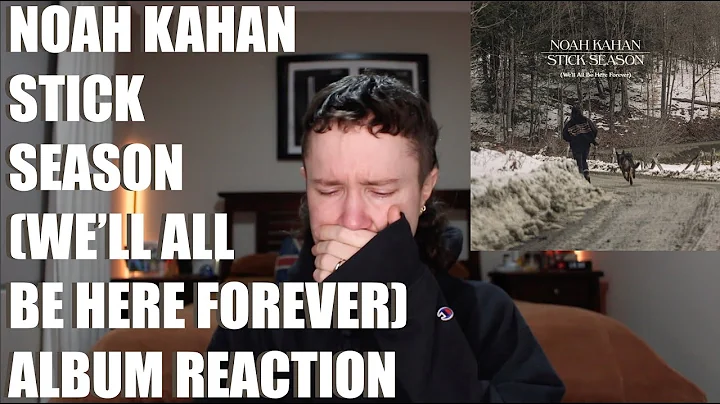The Ultimate Guide to Choosing the Perfect Window Tint
Table of Contents
- Introduction
- Understanding Window Tint and its Importance in Malaysia
- The Different Types of Window Tints
- 3.1 Dyed Tints
- 3.2 Metallic Tints
- 3.3 Ceramic Tints
- 3.4 Photochromatic Tints
- Factors to Consider When Choosing a Window Tint
- 4.1 Total Solar Energy Rejection (TSER)
- 4.2 Infrared Rejection
- 4.3 UV Rejection
- 4.4 Heat Rejection
- 4.5 Signal Interference
- 4.6 Durability
- 4.7 Maintenance
- The Role of Security Tints in Malaysia
- The Limitations of Security Tints
- Debunking the Myth of the "Perfect" Window Tint
- The Pros and Cons of Dyed, Metallic, and Ceramic Tints
- Longevity of Window Tints in Tropical Climates
- Making an Informed Decision for Your Window Tinting Needs
- Conclusion
🚗 The Importance of Choosing the Right Window Tint
Window tinting is a subject of great importance in Malaysia, not only due to its controversial status in the eyes of the law but also because of the country's hot and humid climate. In this article, we will explore the different types of window tints available in the market, their features, and the factors you should consider when choosing the right tint for your vehicle. Let's dive in!
1. Introduction
Window tinting serves as a vital aspect of driving in Malaysia's tropical weather. Not only does it provide privacy, but it also helps protect against harmful UV radiation and reduces the heat entering your vehicle. However, not all tints are created equal, and understanding the variations available in the market is crucial for making an informed decision.
2. Understanding Window Tint and its Importance in Malaysia
Window tinting is not just about aesthetics; it serves a practical purpose in Malaysia's climate. The scorching heat and intense UV radiation can cause significant damage to both the occupants and the interiors of the vehicle. Investing in high-quality window tints can provide added comfort and preserve the longevity of your vehicle.
3. The Different Types of Window Tints
3.1 Dyed Tints
Dyed tints are the entry-level option, offering a low-cost solution for those seeking darker windows. However, dyed tints provide no heat rejection or advanced technology. Over time, these tints tend to fade and deteriorate, leaving you with compromised performance and a less appealing appearance.
3.2 Metallic Tints
Metallic tints utilize metallic particles to reflect and absorb heat, providing better heat rejection than dyed tints. However, the metallic nature of these tints can interfere with electronic signals, causing potential connectivity issues for devices like smartphones and GPS systems.
3.3 Ceramic Tints
Ceramic tints are the newest generation of window tints, offering superior heat rejection while minimizing signal interference. These tints use advanced ceramic nanoparticles that provide excellent clarity, durability, and UV protection. Although slightly pricier than metallic tints, ceramic tints offer a long-lasting and high-performance solution.
3.4 Photochromatic Tints
Photochromatic tints, also known as smart tints, have the ability to darken when exposed to sunlight, offering additional protection against glare. While they provide convenience and adaptability, their heat rejection properties may not be as effective as dedicated heat-blocking tints.
4. Factors to Consider When Choosing a Window Tint
When selecting a window tint, it's essential to consider several factors to ensure you make the right choice for your vehicle's specific needs:
4.1 Total Solar Energy Rejection (TSER)
TSER is a measure of a tint's ability to reject solar energy, including heat, UV radiation, and infrared rays. Understanding the TSER rating of a tint can help you determine its overall performance.
4.2 Infrared Rejection
Infrared radiation is the primary cause of heat build-up in a vehicle. Choosing a tint with high infrared rejection can significantly reduce the temperature inside your car and enhance your driving experience.
4.3 UV Rejection
UV rays can cause skin damage and fade the interior of your vehicle. Opting for a tint with high UV rejection will provide adequate protection for both you and your vehicle's upholstery.
4.4 Heat Rejection
Heat rejection refers specifically to a tint's ability to block and reflect heat from entering your vehicle. Understanding this factor is crucial for maintaining a comfortable interior temperature, especially in Malaysia's hot climate.
4.5 Signal Interference
Certain metallic tints can disrupt electronic signals, leading to connectivity problems for devices. If you heavily rely on your phone or other electronic devices while driving, consider tints with minimal signal interference.
4.6 Durability
Investing in a long-lasting tint can save you money in the long run. Look for tints that are known for their durability and resistance to fading, bubbling, and peeling, ensuring a longer lifespan.
4.7 Maintenance
Consider the maintenance requirements of each type of tint. Some tints may require specific cleaning agents or precautions to maintain their quality, while others may be easier to clean and maintain.
5. The Role of Security Tints in Malaysia
In Malaysia, security tints are gaining popularity due to increased concern for personal safety and protection against break-ins. These tints are thicker and provide additional reinforcement to hold shattered glass together, making it more difficult for potential thieves to gain entry into the vehicle. However, it's important to note that security tints have limitations and may not provide the same level of protection as specialized security glass.
6. The Limitations of Security Tints
While security tints offer added protection, it's important to understand their limitations. When the glass is shattered, the strength of the security tint may prevent immediate penetration but does not guarantee complete protection. The compromised glass integrity remains vulnerable until proper repair or replacement is carried out.
7. Debunking the Myth of the "Perfect" Window Tint
Finding the perfect window tint that combines all desirable features, such as maximum heat rejection, UV protection, signal transparency, and security, is often unrealistic. Each type of tint has its advantages and trade-offs, and it's important to prioritize your specific needs when selecting a window tint.
8. The Pros and Cons of Dyed, Metallic, and Ceramic Tints
To help you make an informed decision, let's weigh the pros and cons of dyed, metallic, and ceramic tints:
Dyed Tints:
- Pros: Affordable, provide privacy, and mildly reduce heat.
- Cons: No advanced technology, minimal heat rejection, prone to fading and deterioration over time.
Metallic Tints:
- Pros: Better heat rejection than dyed tints, increased durability, and affordability.
- Cons: Signal interference, potential connectivity issues, and may have a slightly reflective appearance.
Ceramic Tints:
- Pros: Superior heat rejection, excellent clarity, minimal signal interference, and long-lasting performance.
- Cons: Higher cost compared to other tints.
9. Longevity of Window Tints in Tropical Climates
In Malaysia's tropical climate, not all window tints hold up well over time. Some lower-quality tints may experience reduced performance after the first year or two. Investing in high-quality tints with proven durability can ensure lasting performance, allowing you to enjoy the benefits for years to come.
10. Making an Informed Decision for Your Window Tinting Needs
When it comes to choosing the right window tint, it is important to consider your specific requirements and priorities. Evaluate the total solar energy rejection, infrared and UV rejection, heat rejection, signal interference potential, durability, maintenance, and price to make an informed decision that perfectly suits your needs.
11. Conclusion
Choosing the right window tint for your vehicle is crucial for comfort, UV protection, and maintaining a cooler interior temperature in Malaysia's hot and tropical climate. By understanding the different types of tints available, their features, and the factors to consider, you can make an informed decision that will enhance your driving experience and protect both you and your vehicle.
🌞🚘 Highlights
- Window tinting is essential in Malaysia's hot and tropical climate to protect against heat and harmful UV rays.
- There are different types of window tints, including dyed, metallic, ceramic, and photochromatic tints.
- Factors to consider when choosing a tint include total solar energy rejection, infrared rejection, UV rejection, heat rejection, signal interference, durability, and maintenance.
- Security tints offer added protection against break-ins but have limitations and may not provide the same level of security as specialized security glass.
- It is important to prioritize your specific needs and understand the trade-offs when selecting a window tint.
- Invest in high-quality tints with proven durability to ensure lasting performance in tropical climates.
🔍 Resources:







